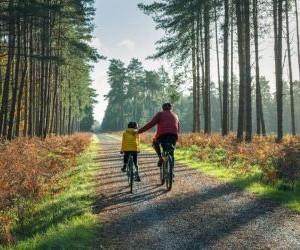Learn how to deal with punctures on long rides with prevention tips, repair techniques, and smart gear choices to keep rolling without stress.
WHAT ARE THE TOP CYCLING TIPS FOR BEGINNERS?
Getting started with cycling can feel overwhelming—gear choices, route planning, group etiquette, and technique all matter. But with a solid foundation, you’ll avoid common mistakes and build fitness quickly. This guide breaks down the best tips for beginner cyclists, covering equipment, riding habits, safety essentials, and training strategies that actually work. It’s everything you wish you knew before your first ride.

Start with the right setup
Your first rides can either build confidence—or frustration. Much of that depends on your gear and how well it's adjusted. A beginner-friendly setup isn’t about having the most expensive bike; it’s about ensuring comfort, safety, and usability.
Bike fit and gear basics
Getting the right bike fit is the single best investment you can make in your cycling journey. An improper saddle height or reach can cause pain, reduce efficiency, and discourage riding altogether.
Get a professional bike fit: Even a basic fit can drastically improve comfort and reduce injury risk.
Choose the right bike type: Road, hybrid, gravel, or MTB? Pick based on your terrain and goals, not trends.
Learn basic maintenance: Know how to inflate tires, check your chain, and fix a flat—these are ride-saving skills.
Dress for conditions: Use padded shorts, moisture-wicking jerseys, and proper gloves. Layer based on weather.
Always wear a helmet: Non-negotiable. A well-fitting helmet is the most important safety gear you own.
Don’t worry about upgrading too soon. Ride more, learn what you like, and upgrade when it’s limiting your progress—not before. Confidence grows faster than gear.
Build strong riding habits
Good riding habits start with consistency and safety. As a beginner, focus on mastering the fundamentals rather than chasing speed or distance. The habits you develop early will shape your experience for years to come.
Key practices for beginner cyclists
Start slow, ride often: Aim for 2–3 rides per week to build endurance without burnout. Keep early rides under 60 minutes.
Learn cadence control: Spin in a lower gear (80–90 RPM) to protect your knees and conserve energy.
Brake gradually: Use both brakes evenly and anticipate stops. Sudden braking causes instability or skidding.
Ride predictably: Signal your turns, don’t swerve, and follow the rules of the road or trail.
Fuel and hydrate: Even short rides require fluids. Carry a water bottle and snack if riding over 45 minutes.
Cycling is also mental. Celebrate small milestones—your first 10 km, first hill, first group ride. Build momentum slowly, and you’ll avoid injury while staying motivated. If in doubt, ride with a more experienced friend or join a beginner group. You’ll learn faster and enjoy more.
Lastly, track your progress with apps like Strava or Komoot, but don’t obsess. Use data to motivate, not to compare. Your biggest gains will come from consistency, not competition.
Stay safe and plan for growth
Safety and progression go hand in hand. By riding smart and gradually increasing your challenge, you avoid setbacks while building fitness and confidence. Beginner cyclists thrive when they feel safe, capable, and supported by smart planning.
Tips for safer, smarter rides
Ride visible: Use lights during the day, wear bright clothing, and stay aware of your surroundings—especially near traffic.
Know your route: Plan your rides on quieter streets, trails, or bike lanes until your confidence grows. Use GPS apps to stay on course.
Check your bike before every ride: ABC check: Air, Brakes, Chain. It takes 2 minutes and prevents roadside issues.
Respect traffic laws: You’re a vehicle on the road. Stop at lights, use hand signals, and never assume drivers see you.
Recover like an athlete: Stretch post-ride, eat protein and carbs, and sleep well. Your body adapts off the bike.
To progress, increase volume or intensity by no more than 10% per week. Learn about zones, recovery rides, and cross-training as you go. When you're ready, try hill repeats, longer weekend rides, or structured plans on platforms like Zwift or TrainerRoad.
Remember: confidence comes with experience. Every pedal stroke teaches you something new. The more you ride, the better you get—and the more fun it becomes. Keep learning, stay curious, and enjoy the ride.
YOU MAY ALSO BE INTERESTED






